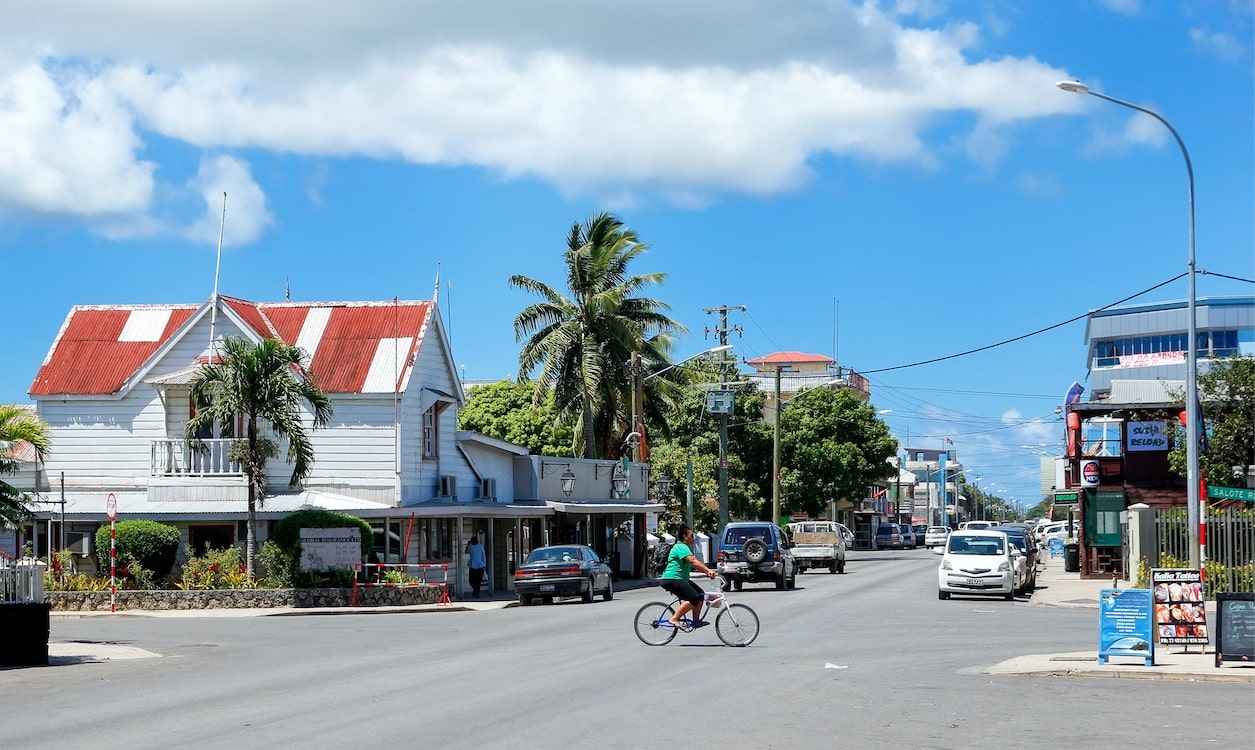
A sustainable roadmap for digital transformation in the Pacific Islands
| The project is responsive to the following SDGs of the United Nations: 8– 9– 16– 17 |
Technological development offers a unique opportunity to public actors in the developing world. It provides useful tools for a sustainable, all-encompassing strategy to improve population management and the local business environment.
It’s not unusual, then, that e-governance-inspired projects become an integral part of the development aid and neighbouring policies of major geopolitical actors on the global arena. In the Pacific region, we are teaming up with the Australian Strategic Policy Institute to sketch out a roadmap for digital transformation for Papua New Guinea (PNG), the Solomon Islands, and Vanuatu.
Hannes Astok, Director for Development and Strategy at e-Governance Academy, has spent three months in Oceania in the first half of 2019. Here, he outlines the necessary points for roadmap development in the Pacific Islands, from knowing your citizens to modern public service delivery.

Talks between eGA representatives and public officials from the Pacific countries started in 2017. Eventually, they resulted in the beginning of a full-fledged advisory project to develop a more detailed digitalization strategy for PNG, the Solomon Islands, and Vanuatu. The major scope consists in creating a fertile ground for public-private partnerships, and for the use of ICTs in governance.
“We’re actively providing in-depth suggestions, and our recommendations will be finalised by the end of this year. From the Estonian side, we’re taking care of infrastructure and services. Australia, with which we have a good cooperation already started in 2018, is dealing with cybersecurity,” Hannes Astok explains.

Workshop with Kiribati e-governance leaders and developers
The collaboration starts from an understanding of the status quo of e-governance in the Pacific region. Based on previous work of e-Governance Academy with more than 130 countries, Astok highlights a situation that is very similar to other developing nations in Africa, Caribbean and elsewhere. “Data is more or less in a digital format, registries are also in place. But well, the accuracy and sophistication of the databases is another topic,” Astok warns.
From a first survey on e-governance maturity, it emerged how the lines of action for a development roadmap could be divided in three, broad thematic areas:
- Telecommunication infrastructure;
- Legal and regulatory frameworks; and
- The final implementation of e-governance services.
“There are institutional and cultural barriers to data exchange, also due to a generally siloed distribution of tasks and duties in public agencies. Only a few countries represent exceptions to the rule, with government Chief Information Officers (CIO) already in place, as well as pretty good policy documents and strategies. However, Internet connectivity is the huge infrastructural issue in the Pacific area, both at the national and international levels,” Astok outlines.
“There’s the need for a single numeric identifier for people and businesses, and an understanding of which services prioritize.”
-Hannes Astok-
In general, these countries present issues of missing e-government architecture. “There’s the need for a single numeric identifier for people and businesses, and an understanding of which services prioritize. But we know that collecting basic population data in insular countries can be quite a pain. Communicating with government officials and banks, in areas where crossing the seas is necessary to reach a local office, can be costly and risky. So, if matters of population management represent the most basic step, developing the business environment is definitely the second main focus area,” Astok highlights.

Panel discussion of the Telecommunication Conference in Fiji
Three success factors can be recognized as the key components to implement an e-governance roadmap:
- A defined institutional setup, with separate tasks and responsibilities;
- Formulating regulations hand-in-hand with the technical development process;
- Political will and support from all relevant stakeholders, as the cultural foundations of any process of truly sustainable development.
“Something we could never stress enough is that public sectors everywhere should modernize the way they govern.”
Something we could never stress enough is that public sectors everywhere should modernize the way they govern. “If you require people to carry papers from office to office, or from island to island, citizens notice that the system needs to abandon traditional service delivery,” Astok explains. Cutting the time and costs of interacting with the public administration is fundamental. But a basic, well-functioning digital architecture is critical to achieve these goals.

Workshop with e-governance leaders of Kiribati
“The invisible backbone of a functioning e-government infrastructure needs national databases where distinct, reliable information is stored. Public registries must act as the only “source of truth” for specific type of data. Identity recognition tools should also be in place,” Astok outlines.
A basic, well-functioning digital architecture is critical to achieve these goals.
Technology and security standards in relation to the databases make part of the picture too. And the maintenance and development of such structure “should be centralised, becoming part of the responsibilities of government CIO – or similar unit,” Astok says. Consequently, ministries have the possibility to fill with content the base infrastructure. By understanding the needs of citizens and businesses, they can provide relevant services according to their own areas of competence.
“It is critical for governments to know their population for policy making and an effective management of public resources. In this way, providing better public services comes easier, from schooling to healthcare and social benefits,” Astok explains.
With eGA’s final recommendations coming up in the end of this year, digital transformation can take place in the Pacific in a holistic, harmonic way. In an area where nature does not make communications, life, and business any easier, technological development comes to help public and private actors build a more integrated, human-centred society.

















